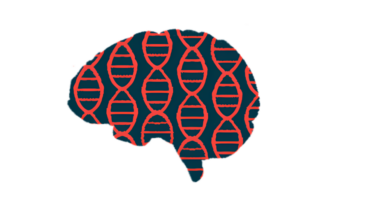National MS Society grant aims to make astrocytes supportive again
Scientists testing ways to prevent these nervous system cells from turning toxic

Backed by a $1 million grant, researchers at Case Western Reserve University in Ohio will explore ways to keep astrocytes in check, protecting the nervous system from damage due to multiple sclerosis (MS). These star-shaped cells of the brain and spinal cord go awry and become toxic in this disease.
The National Multiple Sclerosis Society grant was awarded to a research team co-led by Paul Tesar, PhD, and Ben Clayton, PhD, both with the university’s School of Medicine.
Their project will investigate treatments that may stop toxic astrocytes from forming in lab and animal models of MS, with a goal of stopping and possibly reversing MS disability caused by accumulating damage to the nervous system.
“Our project’s hypothesis is that, by targeting and inhibiting the formation of these toxic astrocytes, we can effectively protect nerve cells, halting or even reversing disability in MS,” Clayton, a founding member of the Institute for Glial Sciences at Case Western Reserve, said in a university news story.
Urgent need for treatments that can protect, potentially regenerate, nerve cells
In MS, an overactive immune system mistakenly attacks the myelin sheath, a fatty covering that insulates nerve cells and allows them to transmit electrical impulses much more efficiently. Loss of myelin, along with ongoing inflammation, damages nerve cells, causing disease symptoms like fatigue, difficulty walking, and vision loss.
Current treatment options for MS focus on reducing inflammation to slow the damage caused by repeated immune system attacks against the myelin sheath, but no therapy can completely halt or reverse existing damage.
“There is an urgent need for transformative therapies that not only slow damage, but also protect and potentially regenerate nerve cells,” said Tesar, who directs the glial sciences institute.
Growing evidence suggests that astrocytes become reactive in response to inflammation in the central nervous system (brain and spinal cord), further contributing to the neurodegeneration that characterizes MS. Normally, astrocytes provide support to nerve cells and are an energy reserve for their function and survival.
Using a lab model that mimics how astrocytes form, Tesar and Clayton’s team screened thousands of chemicals and identified a class, called HDAC3 inhibitors, that can stop astrocytes from acquiring their disease-causing toxic traits.
Compounds targeting astrocytes to be tested in animal, human MS models
The scientists believe that targeting toxic astrocytes in a way that returns them to being supportive cells represents a shift in research toward treatments that may halt — and possibly reverse — disability.
“Our aim is to pioneer the discovery and development of new medicines that specifically prevent the formation of toxic astrocytes, offering a groundbreaking direction in MS therapy,” Clayton said.
With the society’s support, they now will test the inhibitors in a mouse model of MS, assessing whether the chemicals can protect nerve cells and promote repair, easing disease severity.
In a later project stage, the scientists plan to use brain organoids, lab-grown models derived from tissue donated by people with MS that resemble simplified versions of the brain, to test whether selected compounds show benefits in human models.
They note that it could take years before identified compounds might enter clinical studies.
“Realistically, it could be a decade or more before treatments based on this research are available to patients,” Tesar said.“However, each step brings us closer to potentially life-changing therapies for those affected by MS.”
With their grant, which comes as part of a $4.6 million National MS Society initiative to accelerate research into nervous system repair in multiple sclerosis, Tesar and Clayton also will look into genes involved in the formation of toxic astrocytes. This may help to identify potential targets for future treatments.






